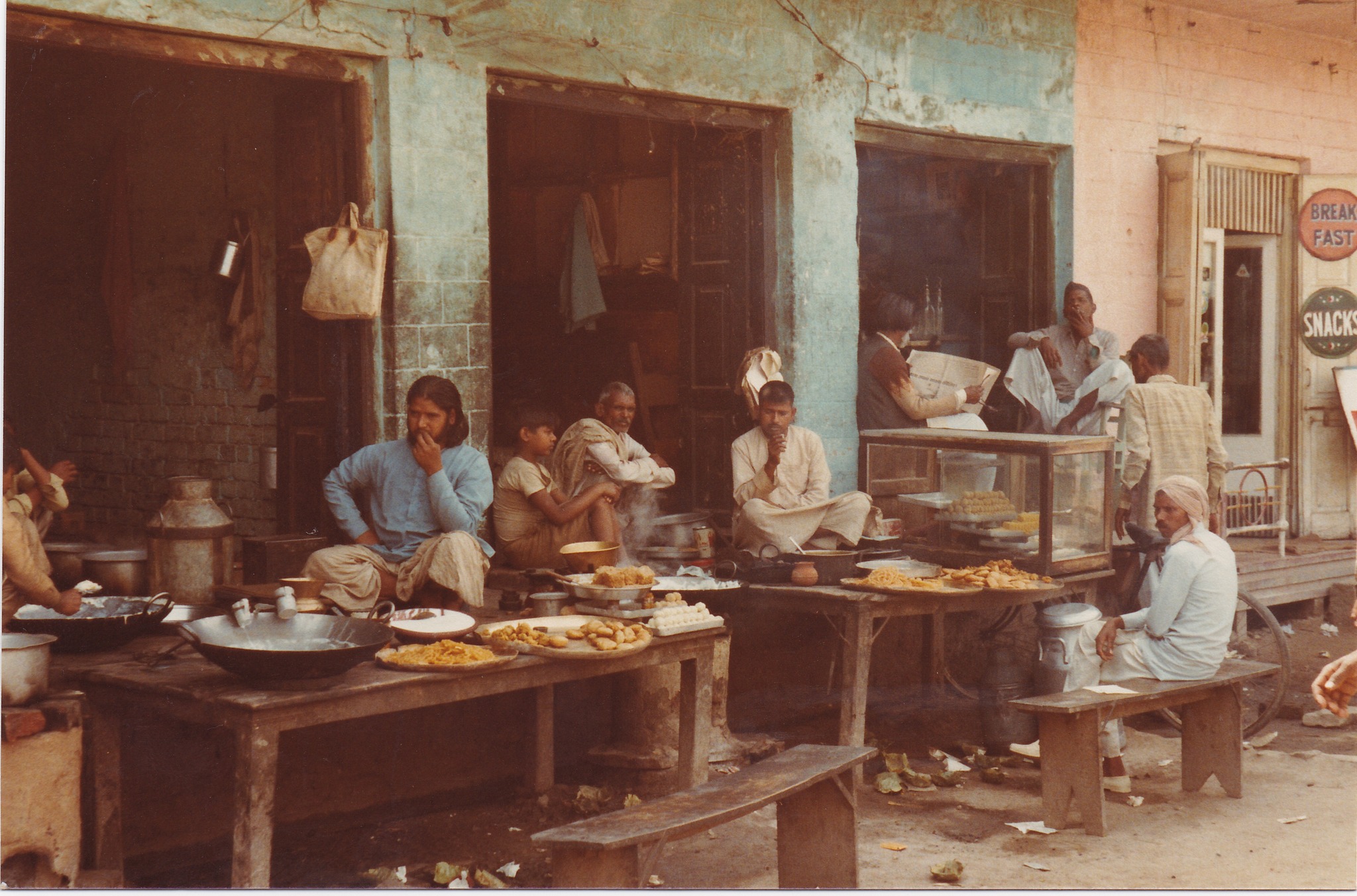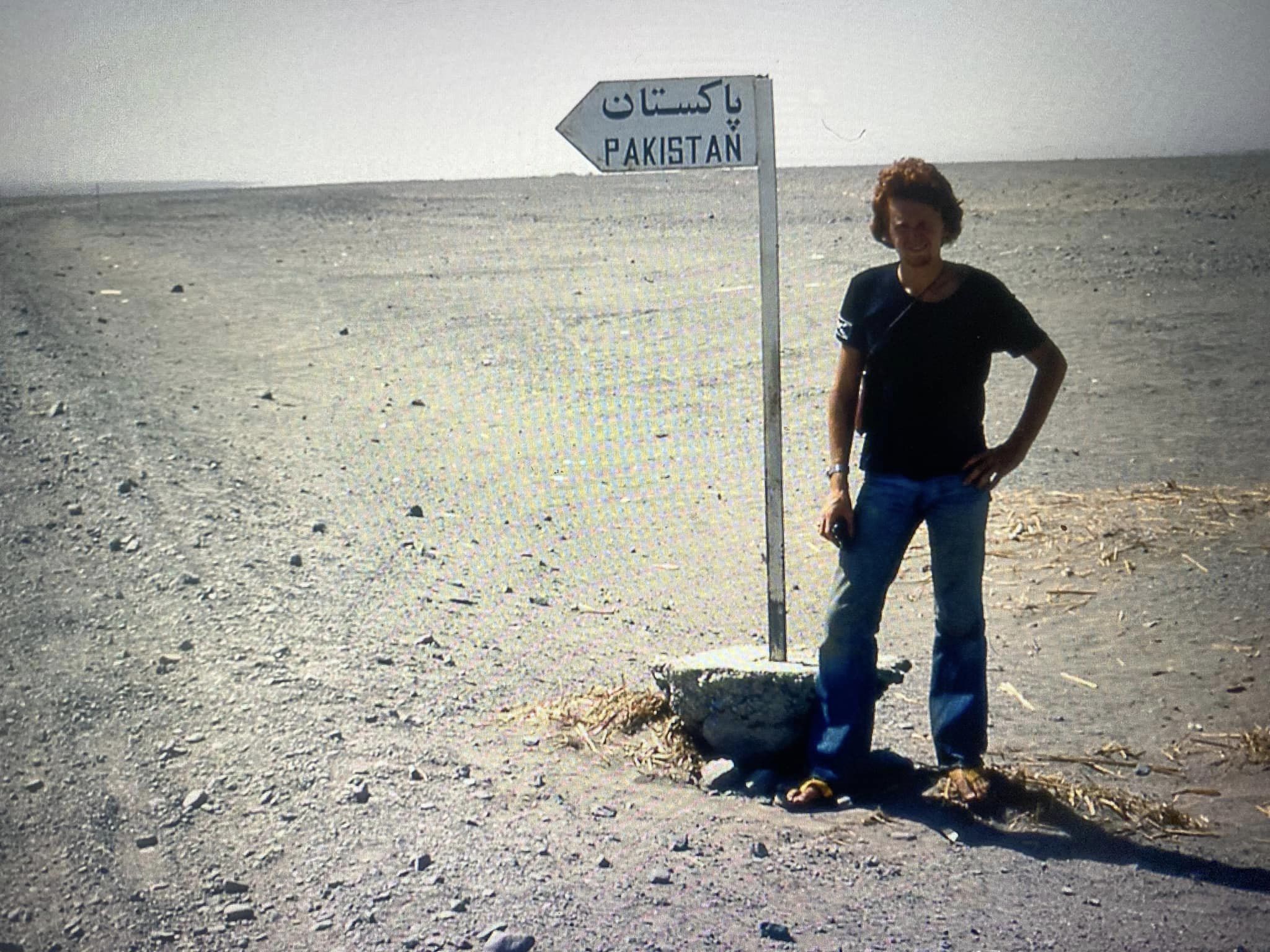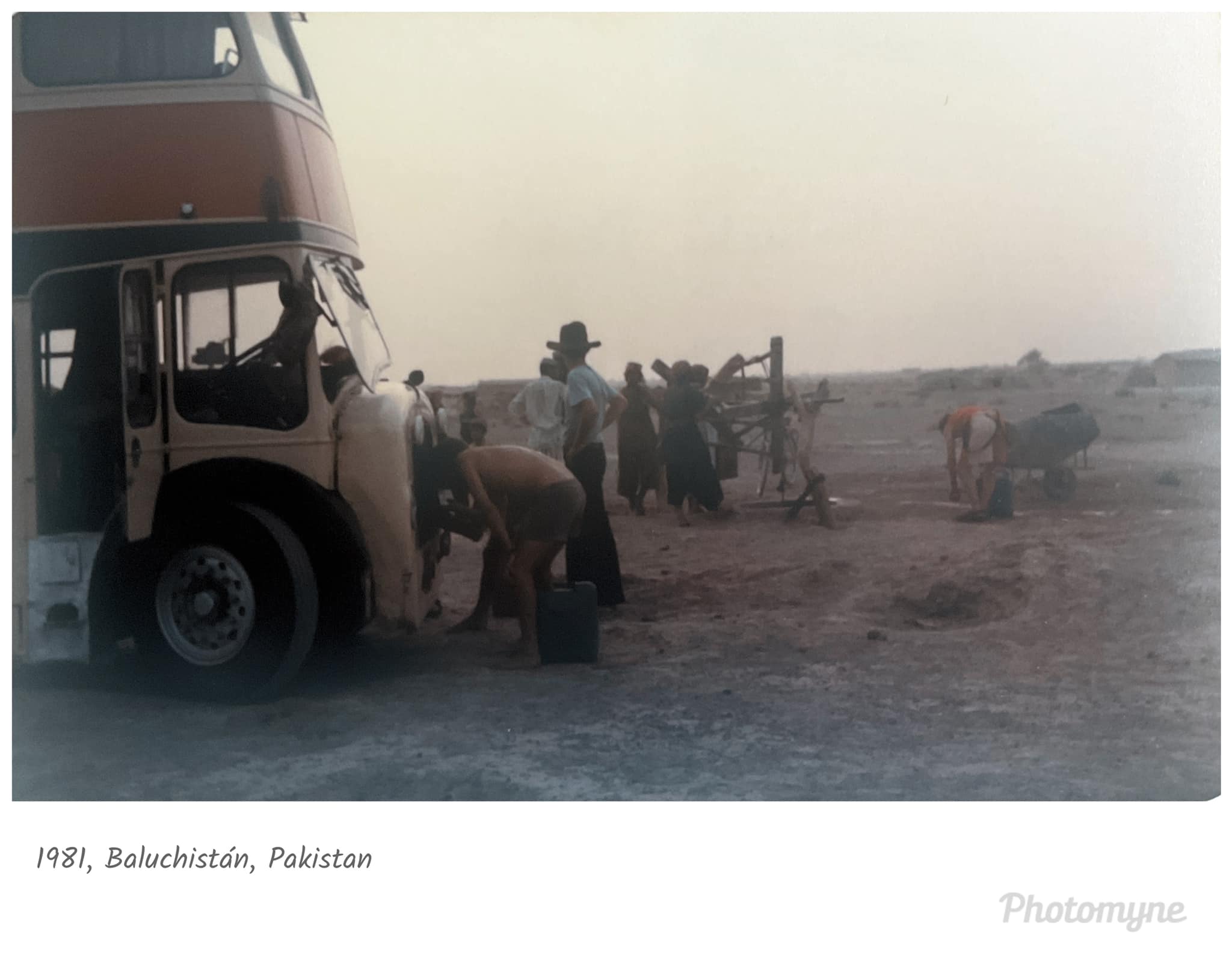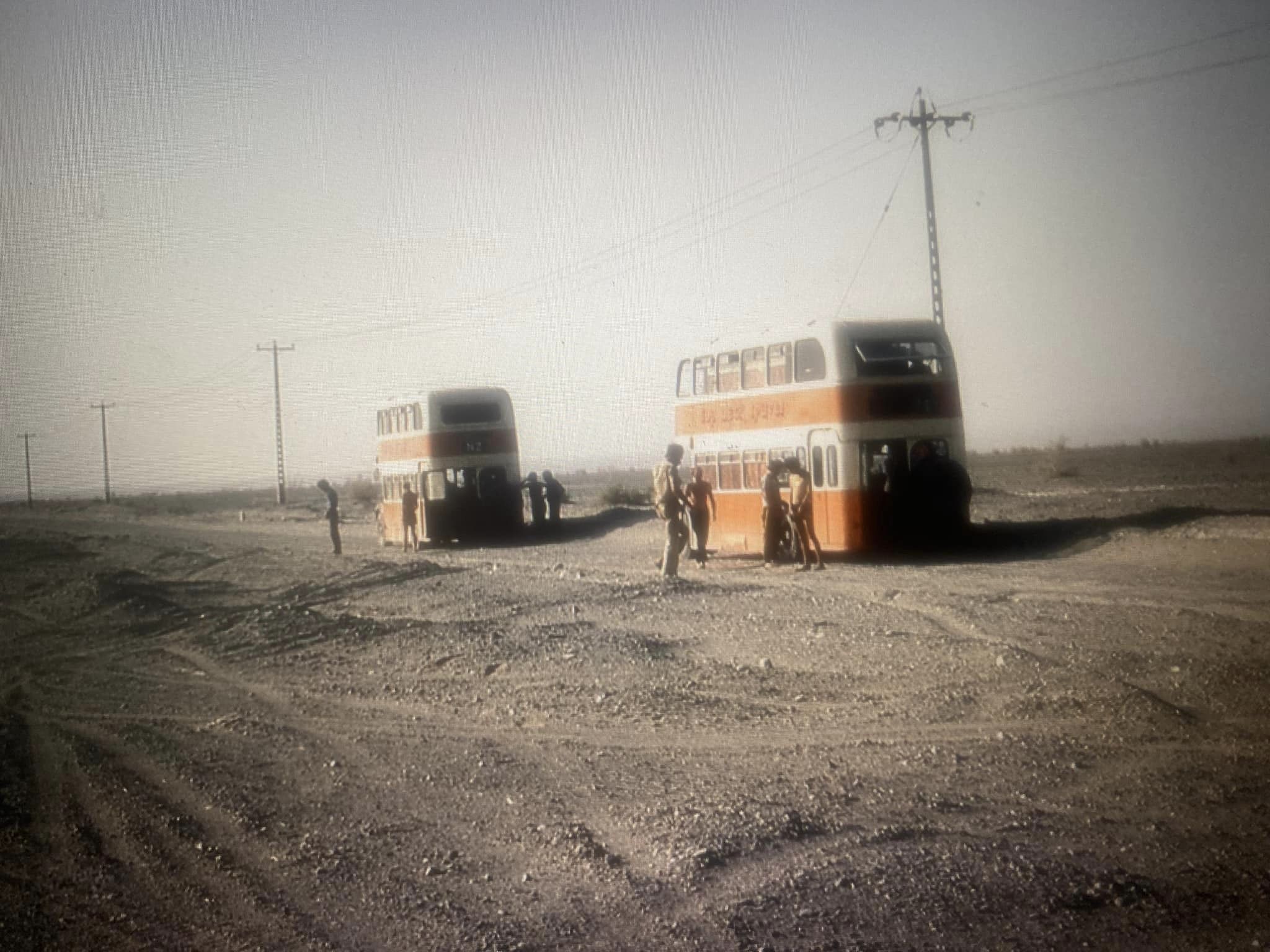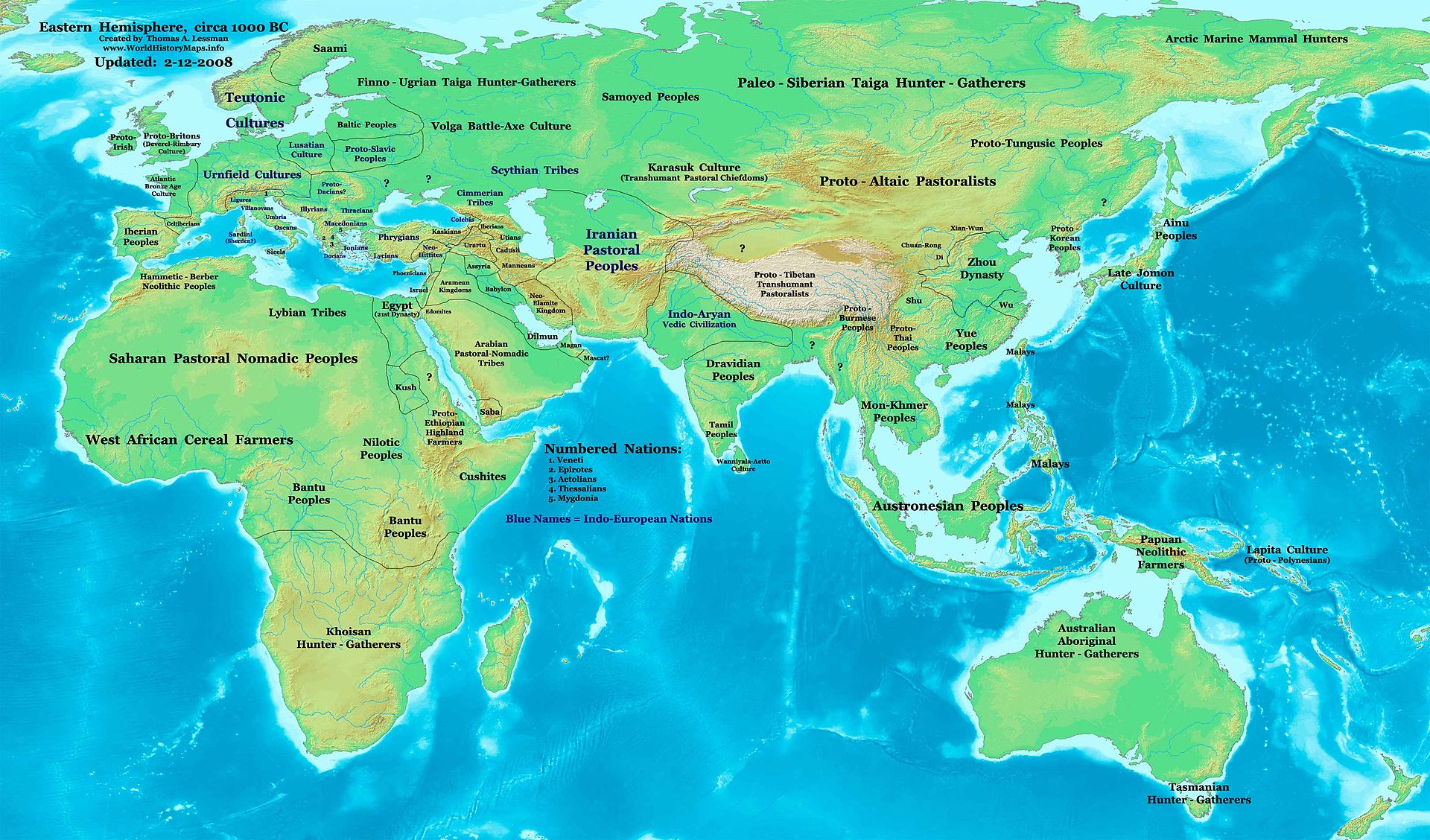
AsianOverland.net
Tour Guide - Itinerary
Asian Overland Sydney to London
Started 22/06/2022 Finished 21/06/2023365 Days ITINERARY
Day 312 date 29/04/2023ZAHEDAN, IRAN to NOK KUNDI, BALUCHISTAN, PAKISTAN
ASIANOVERLAND.NET LONDON TO SYDNEY DAY 312: ZAHEDAN, IRAN TO NOK KUNDI, BALUCHISTAN, PAKISTAN
Today’s drive was the most difficult of both 1980 overland trips from London to Kathmandu and back. After passing through the border from Iran to Pakistan, the “road” turned to sand, rocks and desert, top speed was about 10 mph, the desert heat was unbearable, and the bus couldn’t travel fast enough to create a breeze. Summer in Balochistan is hot and dry, especially in the arid zones, with temperatures reaching 45 °C in the shade and there is no shade. The highest temperature, 53 °C was recorded in 2010.
Balochistan occupies the southeastern part of the Iranian Plateau, the setting for the earliest known farming settlements in the pre-Indus Valley civilisation era, the earliest of which was Mehrgarh, dated 7000 BCE.
Balochistan marked the westernmost extent of the ancient Indus Valley civilisation, which stretched all the way up the Indus valley into Kashmir and Tibet .
The earliest people in Balochistan were the Brahui people, a Dravidian speaking people who retained the Dravidian language throughout the millennias.
Despite the introduction of later Vedic and Zoroastrian scriptures, Indo-Iranians shared a common inheritance of concepts including the universal force *Hṛta- (Sanskrit rta), the sacred plant and drink *sawHma- (Sanskrit Soma) and gods of social order such as *mitra- (Sanskrit Mitra and Old Persian Mithra, Miθra) and *bʰaga- (Sanskrit Bhaga and Old Persian Baga).
The word Hindū is derived from Indo-Aryan/Sanskrit root Sindhu, the name of the Indus River.
The Proto-Iranian sound change *s > h occurred between 850 and 600 BCE. According to Gavin Flood, "The actual term Hindu first occurs as a Persian geographical term for the people who lived beyond the river Indus (Sanskrit: Sindhu)".
This is recorded at Persepolis, in the 6th-century BCE inscription of Darius I (550–486 BCE). The term Hindu in these ancient Persian records at Persepolis is a geographical term and did not refer to a religion.
The religion of Islam arrived in 654, when the newly emerged Rashidun caliphate at the expense of Sassanid Persia and the Byzantine Empire, sent an Islamic army to crush a revolt in Zaranj, which is now in southern Afghanistan. After conquering Zaranj, a column of the army pushed north, conquering Kabul in the Hindu Kush mountain range, while another column moved through Quetta District in north-western Balochistan and conquered the area.
© This work is copyright. Apart from any use permitted under the Copyright Act 1968, no part may be reproduced by any process, nor may any other exclusive right be exercised, without the permission of Peter Searle, peter@portseavillageresort.com; 1980-2024.
Website built by Justin O’Dea www.webdeveloperdocklands.com.au
